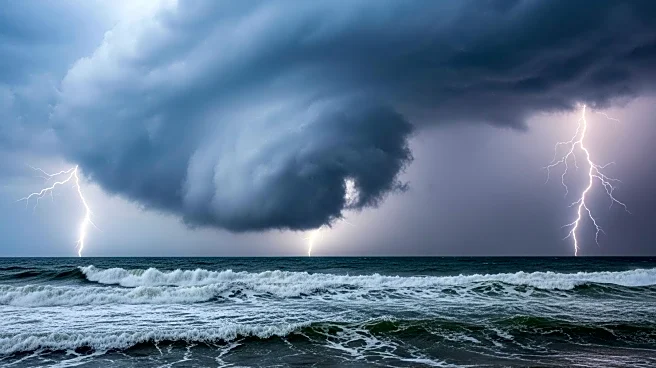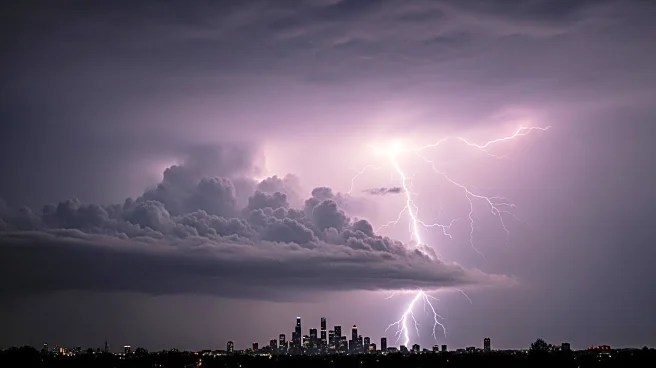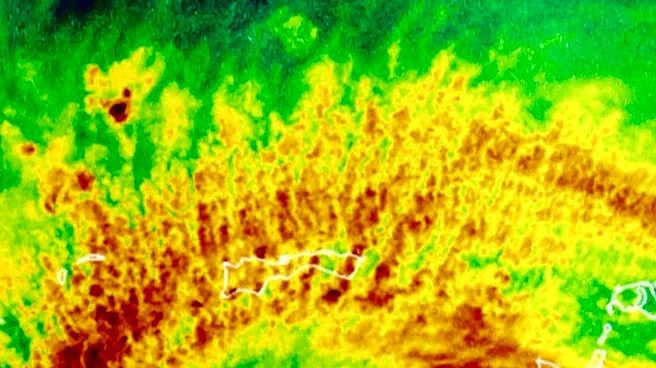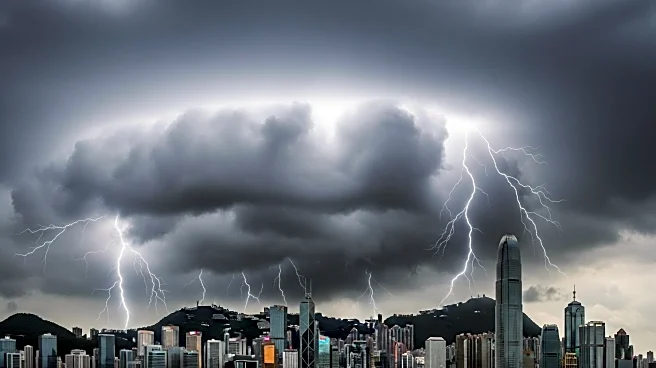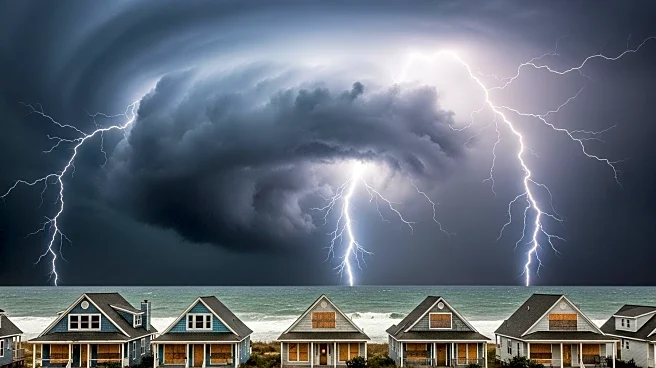What is the story about?
What's Happening?
Super Typhoon Ragasa, one of the strongest typhoons this year, has prompted evacuations in northern Philippine villages and closures in Taiwan. The storm, with sustained winds of 215 kph (134 mph) and gusts up to 295 kph (183 mph), made landfall on Panuitan Island in the Philippines. It is expected to continue its path towards southern China, affecting areas such as Hong Kong and Macao. The Philippines has issued warnings of life-threatening storm surges, and power outages have been reported in affected regions. President Ferdinand Marcos Jr. has suspended government work and classes in several provinces, while Taiwan has ordered closures in coastal and mountainous areas.
Why It's Important?
The impact of Super Typhoon Ragasa is significant due to its potential to cause widespread flooding and landslides, threatening infrastructure and safety in affected regions. The storm's trajectory towards southern China, including Hong Kong, poses risks to densely populated areas and economic activities. The typhoon's arrival coincides with ongoing investigations into corruption scandals related to flood control projects in the Philippines, highlighting vulnerabilities in disaster preparedness. The storm's effects on transportation and daily life in Taiwan and Hong Kong further underscore the need for robust emergency response systems.
What's Next?
As Ragasa continues its westward path, authorities in Hong Kong and Macao are preparing for potential evacuations and disruptions. The storm is expected to make landfall in Guangdong province, China, where preparations are underway to mitigate its impact. Hong Kong's airport anticipates significant flight cancellations, and schools will remain closed. The typhoon's progression will be closely monitored by meteorological agencies, with further advisories expected as it approaches mainland China.
AI Generated Content
Do you find this article useful?









